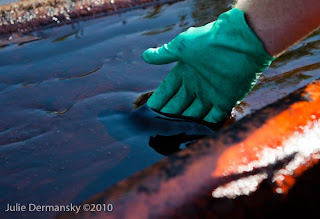



I went to Haiti to cover the elections and the cholera epidemic on November 25th- Dec 4th.
Here are links to my multimedia work on the Atlantic's website about the elections-
and a photo essay featuring Samaritan's Purse's cholera clinic's-the organization hosting Sarah Palin on her visit to Haiti
Cholera cases in and around Port-au-Prince have stabilized. That's what I was told the week ending on December 2nd when I visited five cholera clinics. But Licia Betor who runs the Real Hope for Haiti Clinic in Cazel warned this positive news could change at any time. The decrease in new cases is due to education which is a positive sign, but Betor fears people will grow complacent, tire of the stringent hygiene measures they have been encouraged to practice and go back to their old ways. Haitians now know they need to get to clinics early if they have cholera's main symptoms: vomiting and/or diarrhea. In some cases a patient who goes for help immediately can be rehydrated, given antibiotics and sent home the same day. Most are discharged in two days; young children and the elderly with weaker immune systems get hit the hardest and often stay five days or more. On November 29th when I visted Cazel, the 25 bed clinic had eight patients; on Nov 14th it housed 48. As I was leaving a team of 15 people carried a 72 year old woman on a bed frame padded with cardboard up a steep hill to get to the clinic, a reminder that the epidemic is far from over.
Samaritan's Purse has two cholera clinics, one in Cabaret, a small town 45 minutes north of Port-an-Prince and one in Cité Soleil that opened on November 30th. By the end of its second day, 60 patients had been treated and 35 beds were taken in the new 200 bed facility made of plywood and plastic. In the tent city next to the clinic the displaced people living there are unhappy with the clinic's proximity. They say they are helpless to do anything about it. Dorsius Gefrard complains the smell of chemicals used at the clinic can't be good for them. They are worried their families are now in greater risk of disease.
Doctors Without Borders has 30 cholera treatment centers in Haiti, including 13 in Port-au-Prince. They are seeing approximately 1,200 new cases a day. New cases are expected to rise around the holidays since cholera is a socially transmitted disease. Empty beds are being made ready now in anticipation of a spike in cases. Patients often arrive in a coma, caused by a rapid loss of fluids and electrolytes. They come to the clinics by wheelbarrow, tap-taps (pickup trucks converted into public transportation) or carried by friends, family and neighbors on stretchers, beds and sometimes doors. Often there are multiple infections within families. Fedline Charle's mother, who stayed at her bedside, was later admitted to the same clinic and treated in a tent for adults. Fedline, like the other patients, rests quietly: cholera leaves its victims with little energy.
Wharf Jeremy, one of the poorest parts of Port-au-Prince, has a high rate of fatalities. The neighborhood illustrates the difficulty in irradicating the disease. Cholera cases spiked there after Hurricane Tomas, when a creek that passes through the area flooded homes with contaminated water. An NGO recently installed a unit of portable toilets on the stream's banks where people defecate out in the open. Ilna Lorna, whose job it is to clean them, has had rocks thrown at her by residents. She says she has given up trying to persuade people to use them.
The Haitian Ministry of Public Health has a phone number to call if you find a cholera victim's body. Body collectors arrive within 48 hours. They stuff the mouth with cotton, wrap the head in gauze, tie the arms together and spray the body with bleach before putting the corpse into a body bag, Bodies are taken by truck to a mass grave in Titmayn. The site is near the mass graves of earthquake victims who were buried in January. Charite Charle's body was removed while her two children watched. They are now orphans with nowhere to go. They were living on the street with their mother across from the National Cathedral where she died. The Haitian government estimates that cholera has claimed the lives of more than 1,800 people so far.
The prediction that Haiti would be plagued by disease after the earthquake is now a reality. Despite stabilizing new infections in a handful of clinics, cholera is killing people every day. The disease threatens to become a disaster as deadly as the earthquake. Though the elections have taken the spotlight off public welfare, cholera remains Haiti's biggest threat.
How you can help- visit the website of these NGO's and contribute
Real Hope For Haiti Rescue Center -
Photo captions: top: Jeff Kalason, 9 years old, recovering in cholera treatment center in the Tabarre section of Port-au-Prince run by Doctors Without Borders/
Charle Fedline recovering rests alone after her mother who had been at her bedside had to be admitted to the same clinic run by Doctors WIthout Borders/ Patients recovering at cholera clinic/ Board of Health workers prepare to remove cholera victim from the street to take her to a mass grave north of Port-au-Prince
Bottom- starting from top: Felisse, a 72 years old woman, waits for help at the Real Hope for Haiti Cholera Clinic/ Charle Fedline recovering from cholera/ Licia Betor, who runs the Real Hope for Haiti cholera clinic, cares for Edner Ramo, 52/ 15 people carry Felisse, a 72 years old, woman on a bed frame padded with cardboard to get to the Real Hope for Haiti Cholera Clinic/ Mother and son at a Doctors Without Borders cholera clinic in Port-au-Prince/ Waterway near a cholera clinic in Tabarre/ Solancia Celestin, 11, recovers at the Real Hope for Haiti Cholera Clinic in Cazel/ Gerard Nerulus, 6 years old, at the The Real Hope for Haiti Cholera Clinic


















































